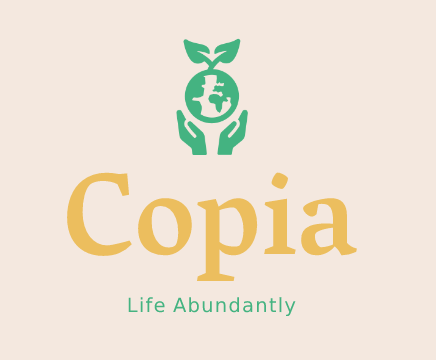Holistic Development and 3D Printed Earthen Housing: Balancing our new "Star Trek" tech with ecologically ethical lifestyles
Understanding holistic development
Holistic development is about considering the entire well-being of a person, including their physical, mental, emotional, and social aspects. It's not just about focusing on one area, but about finding a balance in all these aspects. When it comes to holistic development, the idea is to nurture all areas simultaneously, which can create a more well-rounded and healthy individual. This can involve things like exercise for physical health, mindfulness for mental health, and building positive relationships for emotional and social well-being.
The benefits of holistic development for individuals and society
Holistic development emphasizes the overall well-being of an individual, encompassing physical, mental, and emotional aspects. It aims to create a balanced and harmonious life by integrating various aspects of personal growth. This approach promotes self-awareness, resilience, and a positive outlook. Furthermore, holistic development is not only beneficial for individuals but also contributes to a healthier and more cohesive society. It encourages empathy, collaboration, and a deeper connection to the environment.
What is 3D printed earthen housing?
3D printed earthen housing is a construction method that uses a 3D printer to create buildings using natural materials like clay and soil. The 3D printer deposits layers of the earthen material to build walls and structures, resulting in eco-friendly and sustainable housing solutions. This innovative technology offers the potential for more affordable and environmentally conscious housing, aligning modern technology with ethical and ecological principles.
The ecological impact of 3D printed earthen housing
3D printed earthen housing has a lower ecological impact than traditional construction methods because it consumes fewer resources and produces less waste. The use of natural materials in the construction process ensures minimal environmental disruption, and the efficient use of energy and water during printing and building further reduces ecological impact.
Balancing technological advancement and ecological ethics
New technologies like 3D printed earthen housing can offer sustainable solutions, but we must consider their environmental impact. Balancing technological advancement and ecological ethics involves ensuring that new developments do not harm the environment. It's essential to strike a balance between embracing new "Star Trek" technology and maintaining a sustainable and ecologically ethical lifestyle.
The potential of 3D printed earthen housing in sustainable living
3D printed earthen housing offers a sustainable, eco-friendly alternative to traditional housing. These structures are made from natural materials like clay and sand, minimizing the environmental impact of construction. With 3D printing technology, it's possible to create intricate and durable designs, making it an exciting prospect for sustainable living. The potential applications of 3D printed earthen housing range from affordable housing solutions to disaster relief efforts, offering a promising avenue for addressing global housing challenges.
Advantages of 3D printed earthen housing
3D printed earthen housing offers several advantages that make it an appealing alternative to traditional construction methods. These include:
Sustainability: Using earthen materials for 3D printing decreases the demand for traditional construction materials, reducing the environmental impact.
Affordability: The cost of 3D printed earthen housing is often lower than that of conventional homes, making it an accessible option for many people.
Customization: 3D printing allows for intricate and customizable designs, enabling unique and creative housing solutions.
Rapid construction: The technology allows for quick construction, potentially reducing overall project timelines.
Energy efficiency: Earthen materials provide natural insulation, contributing to energy efficiency and lower utility costs.
Implications for future residential construction and communities
3D printed earthen housing offers a sustainable and affordable solution for residential construction. The technology allows for the creation of sturdy, eco-friendly homes while minimizing the use of traditional building materials. This has profound implications for future residential construction and communities, as it enables the development of housing that is in harmony with nature and reduces our environmental impact. Additionally, the integration of holistic development practices with 3D printed earthen housing promotes ecologically ethical lifestyles, fostering a balance between modern technological advancements and sustainable living.
Incorporating holistic development into 3D printed earthen housing projects
It is essential to consider the holistic development approach when implementing 3D printed earthen housing projects. This involves taking into account not only the technical aspects of construction, but also the social, economic, and environmental impacts. Here are some key points to consider when incorporating holistic development into 3D printed earthen housing projects:
Social impact: Ensuring that the housing project promotes community well-being and inclusivity, considering factors such as access to education, healthcare, and employment opportunities.
Economic sustainability: Striving to create housing solutions that are affordable and accessible to all while also supporting local economies and businesses.
Environmental considerations: Prioritizing eco-friendly building materials and construction techniques to minimize the project's ecological footprint and contribute to sustainable development.
By integrating holistic development principles into 3D printed earthen housing projects, we can strive to achieve a balanced approach that prioritizes both technological advancement and ecologically ethical living.
Striking a balance between advancement and sustainability in modern living
Balancing advancement and sustainability is crucial in modern living. With the rise of 3D printed earthen housing, we are witnessing innovative technological advancements that promise both efficiency and eco-friendliness. However, it's important to remain mindful of the ecological impact of these advancements and ensure that they contribute to holistic development. By finding ways to integrate "Star Trek" tech with ecologically ethical lifestyles, we can create a harmonious balance that benefits both humanity and the environment.

